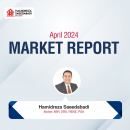Debt to Income Ratio

For most Canadians in 2021, debt is a regular part of life. If you own a house, you likely have a large amount of debt in your mortgage as well as many smaller debts such as car payments, student loans, or credit bills. In 2021, total consumer debt in Canada rose above $2 trillion. You might think of debt as your own personal responsibility, but you may be surprised to know it is also part of something bigger. You represent one component of the larger economy and, therefore, your debt is actually part of a larger measure that is known as the debt to income ratio. The debt to income ratio is an important indicator not just for your own personal financial condition. It’s also used by analysts to measure the average condition of all Canadian's financial situations as well as the condition of the Canadian economy as a whole. Especially as we start coming out of the pandemic-induced recession, economists are paying attention to the debt ratio to see how Canadians are handling changing economic conditions.
What debt to income ratios means for individual
Your mortgage to income ratio is important for you personally because it represents how much of your income goes towards servicing your mortgage debts. When it comes to getting a mortgage, lenders will consider your gross debt service and total debt service ratios, which are a measure that tells them how much of a mortgage you can afford. Lenders need to know you have a certain amount of income to not only afford your housing costs but to continue covering your mortgage if rates or your financial situation changes. Canadian real estate wealth.
Canadian real estate wealth





